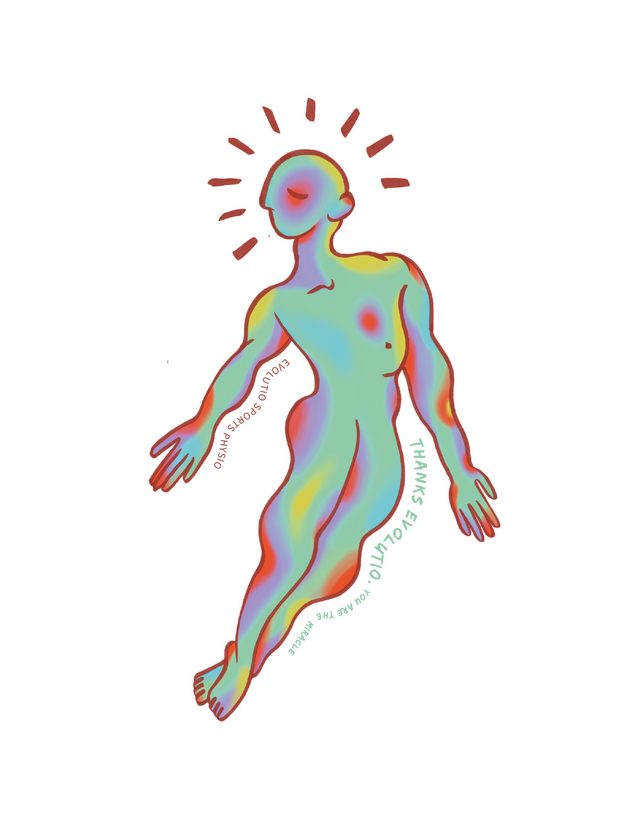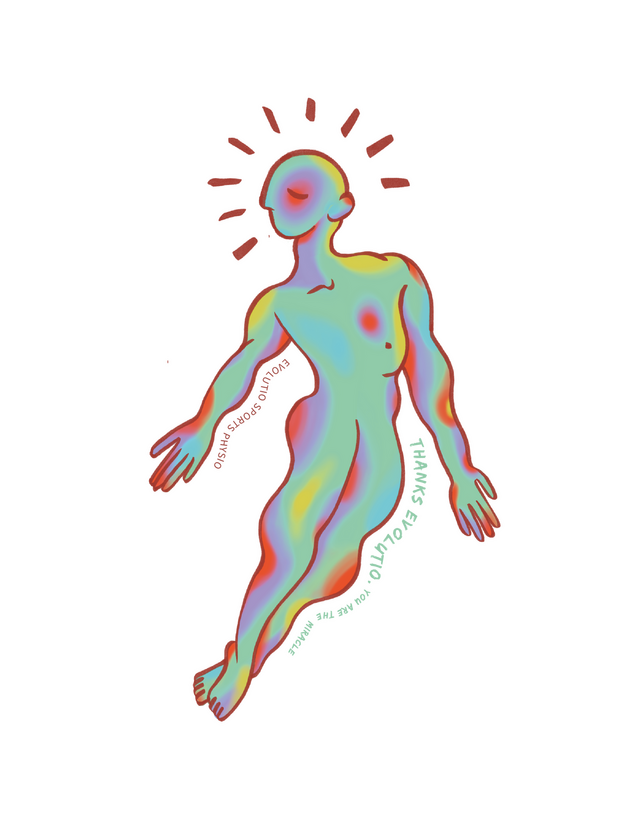When Should I See a Physio for Back Pain?
If you’re wondering when you should see a physio for back pain, It would be best if you considered seeing a physiotherapist for back pain as soon as you suffer pain that seems abnormal or has occurred suddenly. If you've experienced back pain for more than a few days and traditional self-care measures such as rest, and over-the-counter pain medications haven't provided significant relief, consulting a physiotherapist is advisable. Physiotherapists specialise in musculoskeletal conditions, and an early assessment can help identify the root cause of your back pain, enabling the development of a targeted treatment plan to address the specific issues contributing to your discomfort. More specifically, tailored physiotherapy for back pain can involve various manual therapies, exercises, and lifestyle modifications to help reduce the pain and improve the patient's overall well-being.
Another indication to see a physiotherapist is when your back pain is accompanied by symptoms such as numbness, tingling, or weakness in the legs. These could be signs of nerve compression or irritation requiring specialised interventions, including hands-on treatment by physiotherapists specialising in low back pain physio. Additionally, suppose your back pain is associated with activities, postures, or movements. In that case, consulting a back physiotherapist can help identify and modify the activities that could be causing or exacerbating the discomfort to prevent future episodes, thereby improving your overall quality of life. If you're suffering from such persistent lower back pain, scheduling an appointment with a physiotherapist is recommended, as it can help determine the best course of action, such as recommending the best lower back pain physio treatment available for your condition.
What is Back Pain?
Back pain is a common and multifaceted condition characterised by discomfort or pain in the region of the spine, ranging from the neck to the lower back. It can manifest as acute, sudden-onset pain or become chronic, lasting for an extended period. The spine consists of vertebrae, discs, nerves, and various supporting structures, and back pain can arise from a variety of causes. Common contributors include muscle strains, ligament sprains, herniated discs, osteoarthritis, poor posture, and muscular imbalances.
The symptoms and severity of back pain can vary widely. Some individuals may experience localised discomfort, while others may feel radiating pain, numbness, or tingling that extends into the extremities. Factors such as age, lifestyle, occupation, and overall health can influence the likelihood of developing back pain. Sedentary lifestyles, heavy lifting, poor ergonomics, and underlying medical conditions can contribute to the onset or exacerbation of back pain. Proper diagnosis and management are crucial, as back pain can significantly impact daily activities, work productivity, and overall quality of life.
Treatment for back pain often involves a combination of approaches, including rest, pain management, physical therapy, and lifestyle modifications. Physiotherapy, in particular, plays a pivotal role in addressing the root causes of back pain through targeted exercises, manual therapy, and education on proper body mechanics. Overall, understanding and addressing the specific factors contributing to an individual's back pain are essential for effective management and long-term relief.
How many Physio Sessions for Back Pain?
The number of physiotherapy sessions needed for back pain can vary widely based on several factors, including the severity of the pain, the underlying cause, and individual response to treatment. In many cases, individuals with acute back pain may experience significant relief within a few sessions. Physiotherapists often focus on addressing immediate symptoms, providing pain relief through techniques like manual therapy, and introducing exercises to improve mobility and strength.
For individuals with chronic or more complex back pain issues, a more extended course of physiotherapy may be necessary. Chronic conditions may require ongoing management and maintenance to address the symptoms and underlying factors contributing to the pain. Physiotherapists often collaborate with patients to set realistic goals and milestones, adjusting the treatment plan as needed based on progress.
A physiotherapist will generally assess your condition during the initial session and develop a personalised treatment plan. The frequency of subsequent sessions will depend on the specific needs of the individual and the nature of their back pain. Some people may benefit from weekly sessions initially, while others with less severe issues may succeed with bi-weekly or monthly visits. The key is to work closely with the physiotherapist to monitor progress, address any emerging concerns, and gradually transition to a maintenance plan that empowers individuals to manage their back health independently.
Is Physio Good for Back Pain?
Yes, physiotherapy is generally highly effective for managing and treating back pain. Physiotherapists are trained to assess and address musculoskeletal conditions, and their expertise makes them well-suited to identify the underlying causes of back pain. Through a thorough examination, they can pinpoint factors such as muscle imbalances, joint dysfunctions, or poor movement patterns contributing to the pain. Once the root cause is identified, physiotherapists can develop a personalized treatment plan that often includes a combination of manual therapy, targeted exercises, and education on proper body mechanics.
Physiotherapy is particularly beneficial for promoting both short-term relief and long-term recovery. Manual therapy techniques, such as massage, joint mobilization, or manipulation, can help alleviate pain and improve mobility. Additionally, exercise programs designed by physiotherapists aim to strengthen the muscles supporting the spine, enhance flexibility, and improve overall posture, preventing future episodes of back pain. The holistic and patient-centred physiotherapy approach focuses on symptom management and empowers individuals with the tools to actively participate in their recovery and maintain a healthy spine.
Moreover, physiotherapy offers a non-invasive and conservative approach to back pain, making it a preferred option before considering more aggressive interventions. By addressing the root causes of the pain and providing comprehensive care, physiotherapy can be instrumental in restoring function, reducing pain, and improving the overall quality of life for individuals with back pain.
Physio for lower Back Pain
Seeing a physiotherapist for lower back pain can be highly beneficial for several reasons. Physiotherapists are trained to assess and treat musculoskeletal conditions, and they specialize in designing personalized interventions to address the root causes of low back pain. A qualified physiotherapist can thoroughly examine biomechanical issues, muscle imbalances, or other contributing factors that may be causing your pain. By understanding the specific factors contributing to your lower back pain, the physiotherapist can develop a targeted treatment plan to alleviate your symptoms and improve your overall function.
Physiotherapy for low back pain often includes a combination of manual therapy, exercise prescription, and education. Manual therapy techniques, such as joint mobilization or soft tissue manipulation, can help reduce pain and improve mobility. The physiotherapist may also prescribe exercises to strengthen and stabilize the muscles supporting the lower back, promoting better posture and preventing future pain episodes. Additionally, education on proper body mechanics and ergonomics can empower you with the knowledge to manage your condition independently and make lifestyle adjustments to prevent reoccurrence.
Physiotherapy is a conservative and non-invasive approach to managing low back pain, making it a preferred choice for many individuals before considering more aggressive interventions. By addressing the underlying issues through physiotherapy, you may find relief from your current pain and develop long-term strategies for maintaining a healthy and pain-free back. If you're experiencing low back pain, consulting a physiotherapist can be a proactive step towards understanding and effectively managing your condition.
What are the Signs and Symptoms of Serious Back Pain?
Lower back pain manifests with a range of signs and symptoms that can vary in intensity and duration. One of the primary indicators is localized pain or discomfort in the lumbar region, which is the lower part of the spine. This pain can range from a dull, achy sensation to a sharp or stabbing pain, and it may be exacerbated by certain movements, positions, or activities. Individuals with lower back pain may also experience stiffness and reduced flexibility in the affected area, making it challenging to perform normal daily activities or movements.
Radiating pain is another common symptom of lower back issues. Pain may travel from the lower back into the buttocks, hips, and even down the legs, a condition often referred to as sciatica if it involves compression or irritation of the sciatic nerve. Numbness, tingling, or weakness in the legs or feet may accompany this radiating pain. Additionally, lower back pain can contribute to muscle spasms, making it difficult for individuals to find relief or maintain a comfortable position.
The onset and duration of lower back pain symptoms can vary, with some individuals experiencing acute episodes due to sudden injury or strain, while others may develop chronic, persistent discomfort. Factors such as age, overall health, lifestyle, and underlying medical conditions can influence the nature of lower back pain symptoms. Seeking medical attention for persistent or severe lower back pain is crucial to determine the underlying cause and initiate an appropriate treatment plan tailored to the individual's specific condition.
Best Physio for Back Pain
The best Physio for back pain can offer you specialised expertise and a holistic approach to address the root causes of your discomfort. The practitioners at this clinic likely have a strong background in sports physiotherapy, which means they understand the unique demands placed on the spine during physical activities. Whether your back pain is related to a specific sports injury or general musculoskeletal issues, the team at Evolutio Sports Physio can provide targeted assessments and treatments designed to alleviate pain and improve function.
Evolutio Sports Physio may utilise advanced techniques and state-of-the-art equipment to ensure a precise diagnosis and effective treatment plan. This commitment to staying at the forefront of physiotherapy practices can lead to more efficient and tailored interventions for your back pain. The clinic may incorporate a combination of manual therapy, exercise prescription, and other evidence-based modalities to address your discomfort's symptoms and underlying causes.
Moreover, the multidisciplinary approach at Evolutio Sports Physio can provide you access to a range of healthcare professionals, such as physiotherapists, sports doctors, and strength and conditioning specialists, working collaboratively to optimise your recovery. This integrated approach can be particularly beneficial for individuals with complex back pain issues, ensuring that your treatment plan is comprehensive and addresses all relevant aspects of your condition. Additionally, the emphasis on patient education at Evolutio Sports Physio can empower you with the knowledge and tools to actively participate in your recovery, manage your symptoms, and prevent future episodes of back pain. OChoosingEvolutio Sports Physio for back pain can offer you a specialised, evidence-based, and comprehensive approach to help you regain control of your spinal health.







